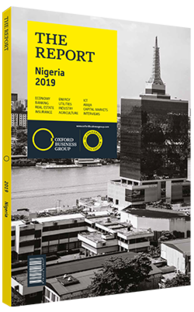Outlook on Nigerian government bonds
Naira-denominated bonds dominate the public debt profile of the Federal Government of Nigeria (FGN). Data from the Debt Management Office (DMO) show a stock of N8.9trn ($28.8bn) at the end of June 2018, equivalent to 11% of GDP in 2017. They also represent 73% of FGN naira debt and 47% of total FGN debt. The bonds are sold monthly at DMO auctions and traded in an active secondary market. Their maturities extend to 20 years.
We saw a narrowing of yields between August 2017 and June/July 2018 (see graph). The principal driver of this change was the DMO’s medium-term Debt Management Strategy 2016-19. The strategy’s aim is to bring the FGN’s domestic and external debt-to-GDP ratio from 67:33 in 2018 to 60:40. To achieve this target, eurobond proceeds will be deployed to retire Nigerian Treasury Bills (NTBs) up to a ceiling of $3bn. These transactions were booked between December 2017 and June 2018.
Paper Demand
The DMO is able to conduct its auctions relatively smoothly as a result of healthy demand for paper from three segments of the market. The first is the deposit money banks (DMBs). Lending from DMBs to the real economy have stagnated despite the repeated exhortations and incentives of the Central Bank of Nigeria (CBN). They are more comfortable buying government paper at +/- 15% than lending outside their circle of customers at 20% or beyond.
The second is the pension fund administrators (PFAs). They were badly affected by the stock market fallout of 2008 and 2009, and are in no hurry to return to the stock exchange. Indeed, statistics from the industry regulator, National Pension Commission, for August 2018 (see graph) show that domestic equities comprised just 8% of their assets under management, compared to 51% for government bonds and 18% for NTBs. PFAs’ holdings of the bonds represent 47% of the total stock of the instruments.
The third is the community of foreign portfolio investments (FPIs). FPIs contributed to the narrowing of FGN bonds. Foreign portfolio investors welcomed the process of externalisation in the market and were also comfortable with the central bank’s foreign exchange reforms, which meant that they felt they could exit the market through the investors’ and exporters’ window, or the Nigerian Autonomous Foreign Exchange (NAFEX). The impact of externalisation was first visible in NTBs and thereafter in FGN bonds. We noted that FPIs did not wait for the relisting of government bonds by global investment bank JP Morgan before returning to the market.
Projection
Over a 12-month horizon we see the FGN bonds trading within a narrow range, with a weakening bias. Unlike the majority of commentators, we feel that the general election slated for February 2019 is not a substantial market mover. The supply of new paper will increase moderately because the focus of the FGN has shifted towards a larger weighting for external issuance.
We do see a pick-up in inflation as a result of insecurity in the main food growing areas and of spending related to the polls. For domestic institutions, inflation is not a core pillar in their strategy because of a paucity of instruments in which to invest.
On the demand side, there are two factors to explain a weakening bias. First, we think that the DMBs will start to expand their loan books so as to defend their margins. This will have an impact on their purchases of FGN paper. Second, FPIs are losing some of their appetite for naira-denominated paper, which is evident from lower bids at bond auctions and from the CBN’s role as a provider of foreign exchange on NAFEX. US monetary policy notwithstanding, the yields are still among the highest across emerging markets. Additionally, given that oil prices are underpinning the CBN’s exchange rate policies, we will likely see the exit of some FPIs.
You have reached the limit of premium articles you can view for free.
Choose from the options below to purchase print or digital editions of our Reports. You can also purchase a website subscription giving you unlimited access to all of our Reports online for 12 months.
If you have already purchased this Report or have a website subscription, please login to continue.

